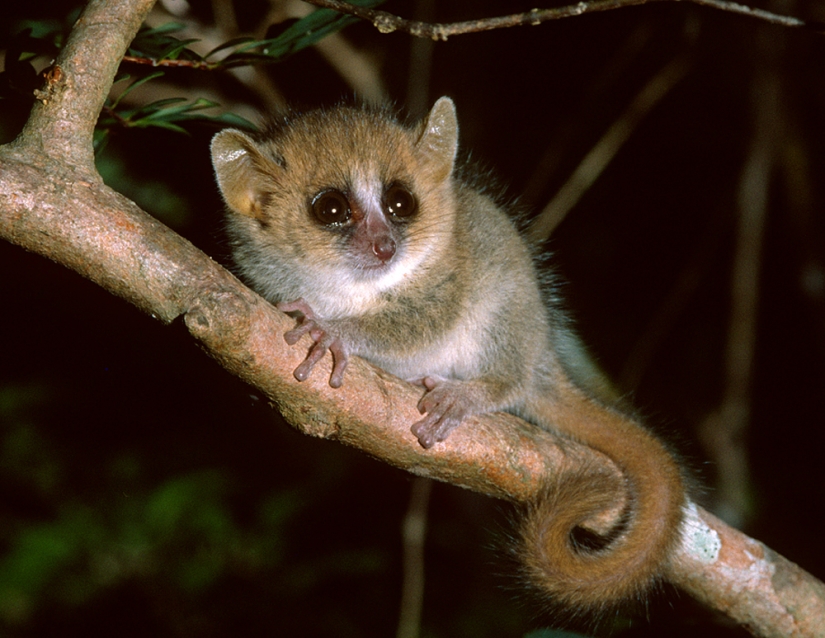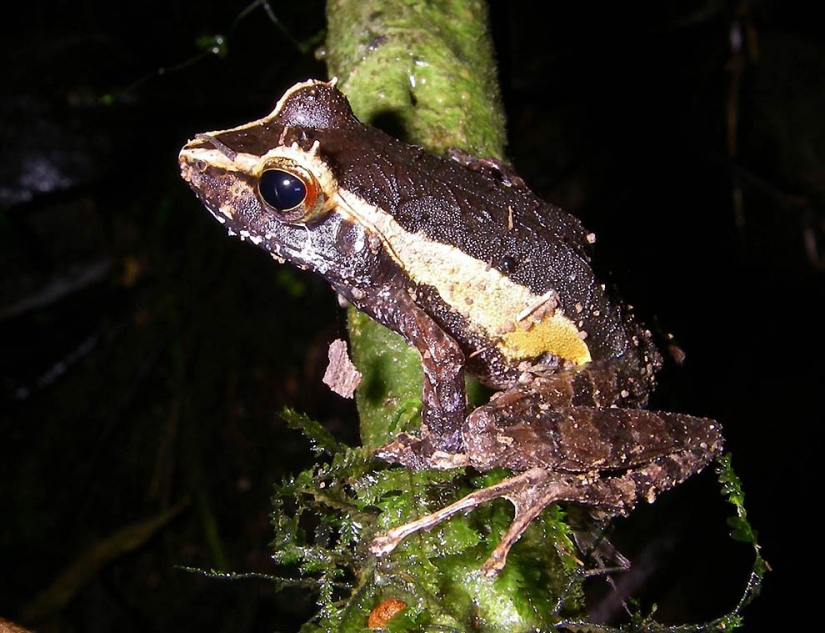Amazing creatures of Madagascar
Categories: Animals
By Pictolic https://pictolic.com/article/amazing-creatures-of-madagascar.htmlOn August 10, 1500, the Portuguese navigator Diego Dias discovered the island of Madagascar. Actually, he was sailing to India, but he got into a strong storm and deviated from the course, so the discovery was accidental. Madagascar to this day remains one of the most mysterious islands on the planet, where unique animals live.

Approximately 160-165 million years ago, the island of Madagascar separated from the African continent, and then from India — about 65-70 million years ago. Madagascar is one of the most abundant tropical places on earth with animal species. Thanks to the unique natural conditions, species that have long been extinct in all other parts of the world live and develop here.
In the period from 1999 to 2010, experts from the International Wildlife Fund (WWF) discovered 615 new species of animals in Madagascar. However, some of the island's fauna is at risk of extinction due to deforestation, poaching, illegal trade in rare animals and other factors. Such animals include the mouse lemur, which was discovered on the island in 2000. Its body length averages 9 cm, making it the tiniest primate in the world. These lemurs are no more than 27 cm long (from the head to the tip of the tail).

In the period from 1999 to 2010, experts from the International Wildlife Fund (WWF) discovered 615 new species of animals in Madagascar. However, some of the island's fauna is at risk of extinction due to deforestation, poaching, illegal trade in rare animals and other factors. Such animals include the mouse lemur, which was discovered on the island in 2000. Its body length averages 9 cm, making it the tiniest primate in the world. These lemurs are no more than 27 cm long (from the head to the tip of the tail).

The territory of Madagascar PK32-Ranobe, which is captured in this picture, is a habitat for various biological species and at the same time is almost completely surrounded by mines in which there is active mining. The World Wildlife Fund is currently advocating the expansion of the boundaries of the protected area to include more key habitats of species. Negotiations with mining companies do not bring the expected results: every year there are more and more territories of the company that extract minerals, which are so rich in the sandy soil of Madagascar, and a huge amount of forest is cut down to obtain wood, from which charcoal is then made.

This bright chameleon belongs to the Furcifer timoni species, which was discovered in remote rainforests in northern Madagascar in 2009. Both male and female individuals in the process of mutation acquired a bright color, reminiscent of makeup in the style of "glam rock". Scientists say that the discovery of this species of chameleons was a big surprise for them, since the area has been carefully inspected for new reptile species over the years.

The frog Boophis bottae is one of 69 amphibians discovered in the last 11 years on the territory of Madagascar. The diversity of amphibians living in Madagascar is simply amazing and plays an important role for the whole planet. The number of amphibians is declining both worldwide and in Madagascar. After a recent DNA study, experts have suggested that in Madagascar, the destruction of habitual habitat affects more species than previously thought.

In 1992, only two species of dwarf mouse lemurs were known to science. Since that time, the number has increased to fifteen, including the species Microcebus berthae, which you see in the photo. Considerable diversity can also be found within a single species. Scientists examined 70 individuals of dwarf lemurs with different coat colors living in different parts of the island, and then came to the conclusion that they all belong to the same species.

This female chameleon of the Furcifer timoni species shows us her bright saturated color in the style of "glam rock". Since 1999, 11 new species of chameleons have been discovered.

A male frog of the species Boophis lilianae fertilizes a female among greenery in the Ranomafana National Park in Madagascar. This species was first described in 2008.

This species of chameleons (Calumma tarzan), which lives in the eastern and central parts of Madagascar, was discovered by scientists and first described in 2010. It was named after the village, which is located near the habitat of this chameleon, as well as in honor of the famous Tarzan, a character in the novel by Edgar Rice Burroughs. "We name this species after the literary character Tarzan in the hope that thanks to this well-known name, the public will pay attention to a truly endangered species and its habitat."

The chameleon of the Furcifer timoni species shows a head on which a large uneven bright red spot and small blue inclusions flaunt. The animal was photographed in the tropical forests of the Montagne d'abre massif in northern Madagascar.

A tropical frog of the species Gephyromantis tschenki was discovered and first described in 2001. It can be seen in the island's nature reserves, including the Ranomafana region and Madagascar's Befotaka-Midongy National Park.

It is not difficult to guess why, until recently, this species was hidden from the sharp eyes of scientists. A gecko of the species Uroplatus pietschmanni, whose skin resembles tree bark and tail is a dry leaf, was discovered by scientists in 2003 in the eastern tropical forests of Madagascar. The favorite habitats of the 13-centimeter reptile are thick branches, the bark of cork trees and plants with wide leaves, and thanks to its excellent natural camouflage, it remains almost invisible.

The Madagascar reefs in the Tuliar area are more than 27 km long and more than 3 km wide. In general, the system of numerous reefs from Tulyara to Morombe creates an almost continuous shallow water barrier with a length of 400 km. It is the largest reef system in the western Indian Ocean. And although these reefs are quite large, they are greatly influenced by human and natural factors, such as overfishing and excessive precipitation.

The spotted Madagascar rainbow fish of the species Bedotia marojejy, which lives in the rivers of the island, was first discovered in 2000. Today, this species is threatened by habitat loss. Only during the period from 1999 to 2010, scientists of the World Wildlife Fund discovered 17 new species of fish on the island.
Recent articles

While the sun practically disappeared from the sky above the Arctic Circle and the night seemed endless, the Vikings prepared to ...

This is for us, people, the New Year is one of the most important holidays of the year. But for animals, it's all a fuss, running ...

If it seems to you that the New Year holidays are being celebrated somehow incorrectly, then you definitely haven't seen these ...